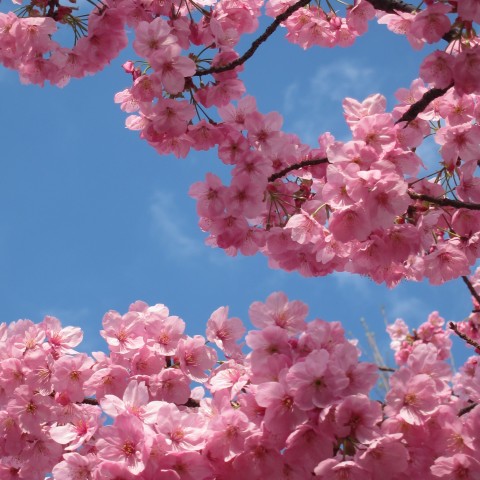In Bulgaria, Baba Marta Day (also called Grandma March Day) is a unique holiday associated with the beginning of spring, and can last all through the month of March. At its center is the mythical Baba Marta Bulgarian folktale character, who personifies every aspect of the month of March.
In this article, you’ll learn all about Baba Marta Day, the character behind it, and the most common traditions for the Baba Marta Bulgaria holiday. Are you ready? Let’s get started!
1. What is Grandma March Day?
Baba Marta (Granny March Day) is a feast associated with the coming of spring and the mythical figure of Baba Marta.
According to the Baba Marta legend, she is the sister of two other characters, named Big Sechko and Little Sechko, who represent the months of January and February. Baba Marta represents the month of March, as well as the beginning of spring. Therefore, the holiday of Baba Marta is associated with the beginning of a new cycle in nature and with wishes for health and fertility.
In addition, Baba Marta is known for her often-changing mood and anger toward her brothers. Because March in Bulgaria is known for being a month of changing weather, it’s believed that Baba Marta is behind any bad weather or storms that occur during March.
-
→ For some useful weather-related Bulgarian words, visit our Weather vocabulary list!
→ To learn how to express your own bad mood, we have a vocabulary list for that too. 😉
2. When is Baba Marta?
Each year, Bulgarians officially begin celebrating Baba Marta Day on March 1, and the holiday can actually last all through the month of March.
3. Baba Marta Traditions & Celebrations
The most common tradition on Baba Marta Day is that of the Мартеница (martenitsa), which is a Гривна (grivna), or “wrist band,” made of бял и червен конец (byal i cherven konets), or “red- and white-colored thread.” These two colors are said to represent different things; the red is for blood or life, and the white is purity and happiness. Oftentimes, people create their martenitsi with additional decorations, including beads, shells, and even garlic.
People wear these Baba Marta bracelets for most of March, believing them to act as protection against evil spirits, demons, and illness. In addition, it’s thought that Baba Marta martenitsi make Mother March happy, thus ensuring that the wearer has her favor.
In some parts of Bulgaria, martenitsi are worn in different ways depending on who the wearer is. Married men put martenitsi in their right sock, young single men wear them on their left pinkies, and young single girls wear them on the left sides of their dresses. When the wearer sees his or her first sign of spring, like a tree beginning to bloom or the arrival of a sparrow or Щъркел (shtarkel), meaning “stork,” he takes off his martenitsa and ties it to a tree.
-
→ Are you ready for spring? Check out our top words for the first day of spring!
4. Baba Yaga?
Baba Marta, for foreigners, may not seem very familiar. But maybe you’ve heard of Baba Yaga, a very similar character from Slavic folklore.
Baba Yaga is generally portrayed as wicked, although in some stories, she has been shown to guide characters with her wisdom. An old woman who lives in a chicken-legged hut, Baba Yaga kidnaps and eats little children and flies around on a pestle carrying a birch broom to cover her tracks.
While found in many Eastern European countries such as Romania, Serbia, Croatia, Hungary, Macedonia, Slovenia, Ukraine, Latvia, Belarus, and Bulgaria, Baba Yaga figures most prominently in Russian and Polish folktales and literature.
5. Must-Know Vocabulary for Baba Marta Day
Ready to review some of the vocabulary words from this article? Here’s a list of the most important vocabulary for Baba Marta Day!
- Мартеница (martenitsa) — “martenitsa”
- Гривна (grivna) — “wrist band”
- Благоденствие (blagodenstvie) — “well-being”
- Щъркел (shtarkel) — “stork”
- бял и червен конец (byal i cherven konets) — “red and white colored thread”
- Здраве (zdrave) — “health”
- Баба Марта (Baba Marta) — “Granny Martha Day”
- Баба Марта (Baba Marta) — “Grandma March Day”
- цъфнало дърво (tsafnalo darvo) — “bloomed tree”
- плетена гривна (pletena grivna) — “woven wrist band”
To hear the pronunciation of each word, and to read them alongside relevant images, check out our Bulgarian Grandma March Day vocabulary list!
Final Thoughts
What are your thoughts on the Baba Marta holiday in Bulgaria? Who are the most popular mythical or folklore characters in your country? Let us know in the comments!
If you’re interested in learning more about Bulgarian culture and holidays, be sure to check out the following pages on BulgarianPod101.com:
- Bulgarian Pop and Traditional Culture
- Top 5 Things to Know About Bulgaria
- What’s Your Favorite Bulgarian Food?
- Bulgarian Holiday for the Glagolitic & Cyrillic Alphabet
- Unification Day: Bulgarian Traditions and Celebrations
Whatever your reasons for developing an interest in Bulgarian culture or the language, know that BulgarianPod101.com is the best way to expand your knowledge and improve your skills. With tons of fun and effective lessons for learners at every level, there’s something for everyone!
Create your free lifetime account today, and start learning Bulgarian like never before!













